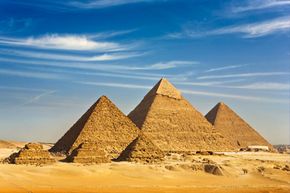So, what if I told you there were straight lines crossing (and crisscrossing) Earth that demarcated important locations? If you're a kind of everyday normal-type person, you might think I'm talking about latitudinal and longitudinal lines. If you're not entirely normal and everyday, your first thought might be something more like, "Oh, right — ley lines that connect sacred sites throughout the world. Sure. Those." And right about now, everyone else is probably wondering, what are ley lines?
Advertisement
